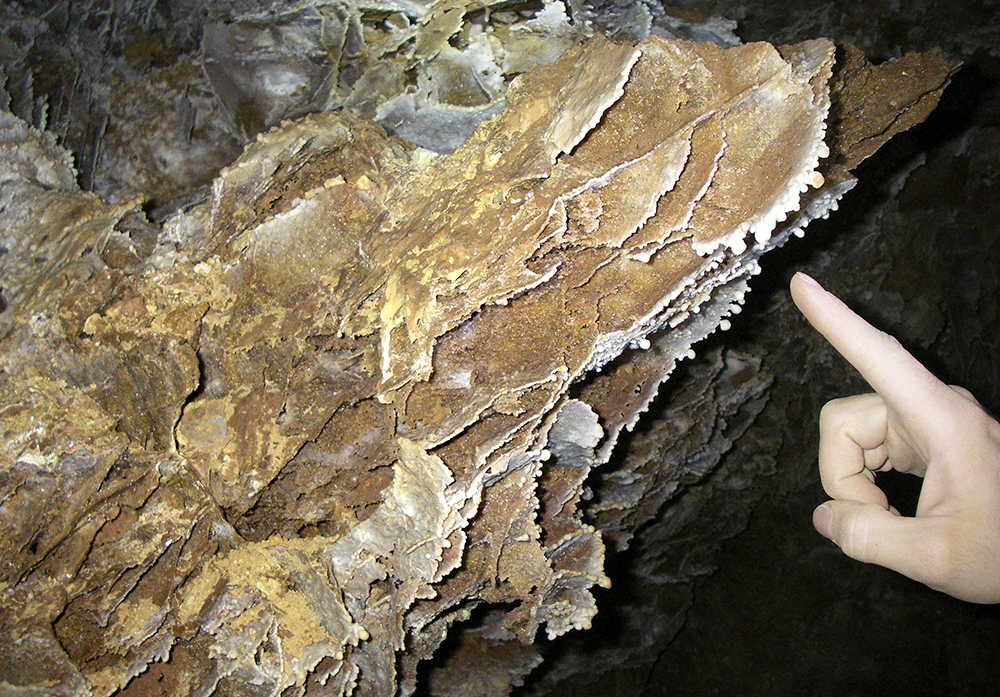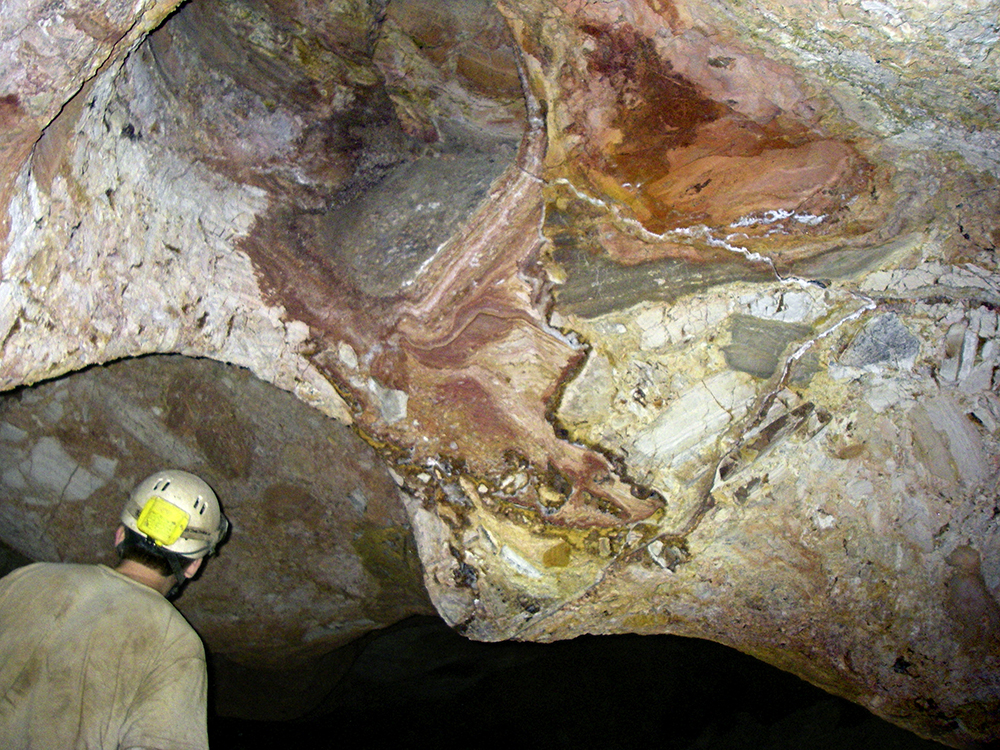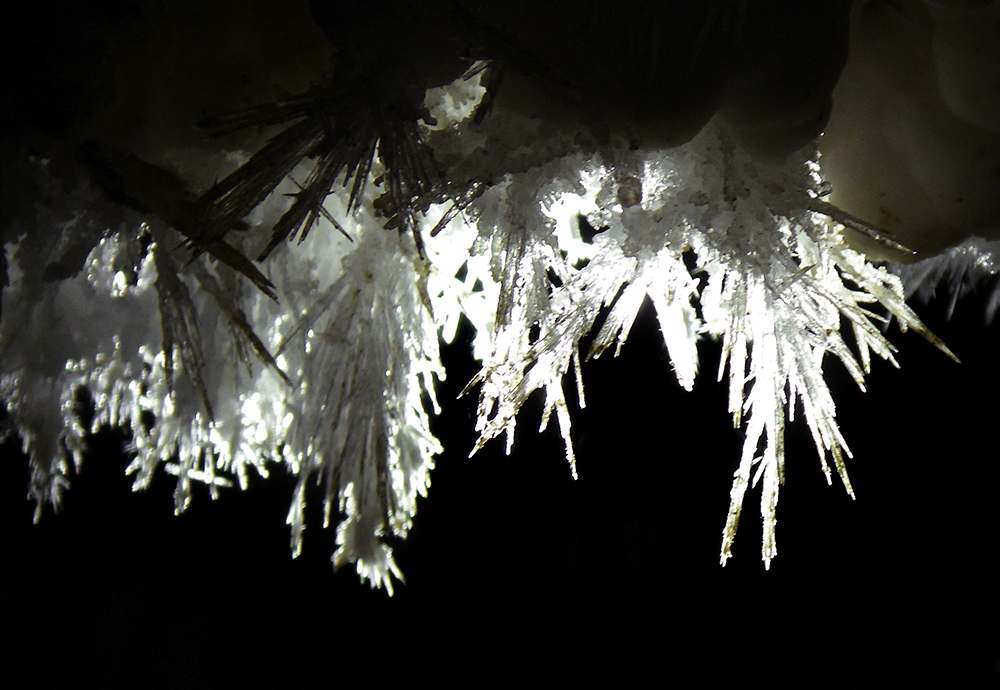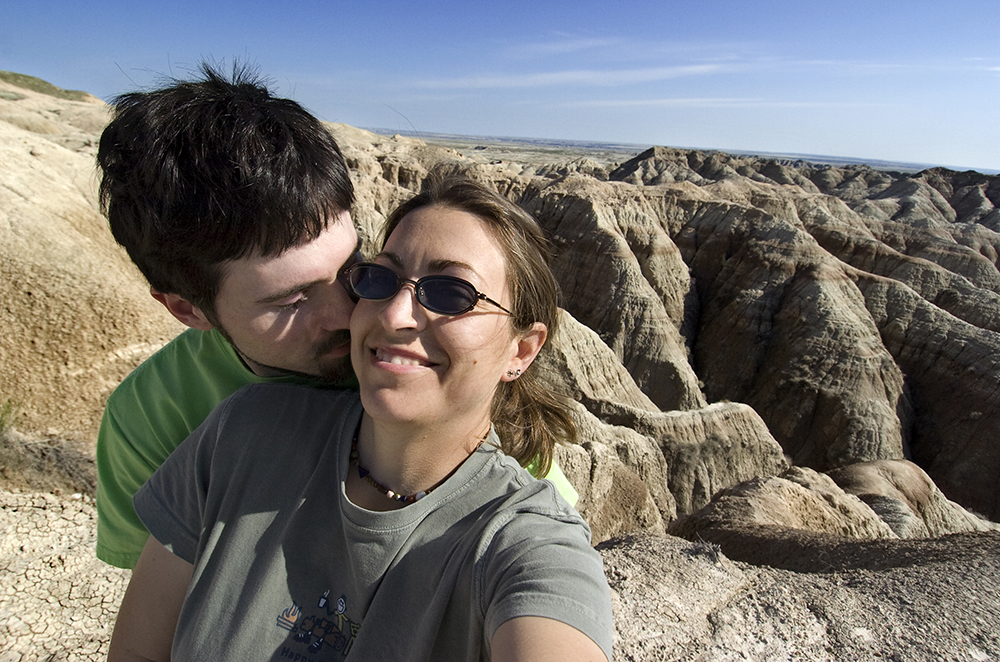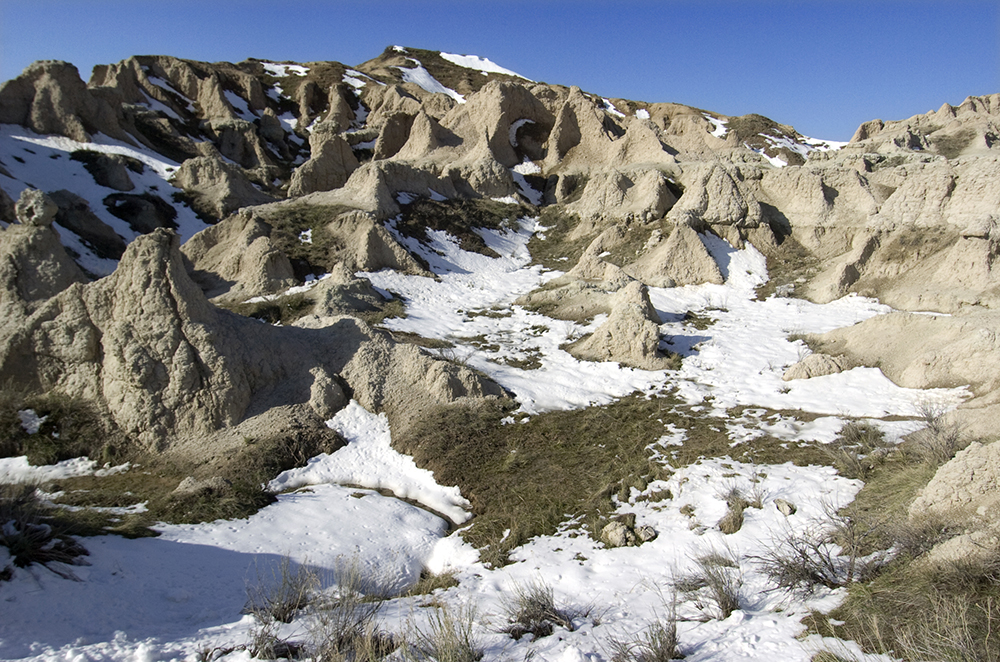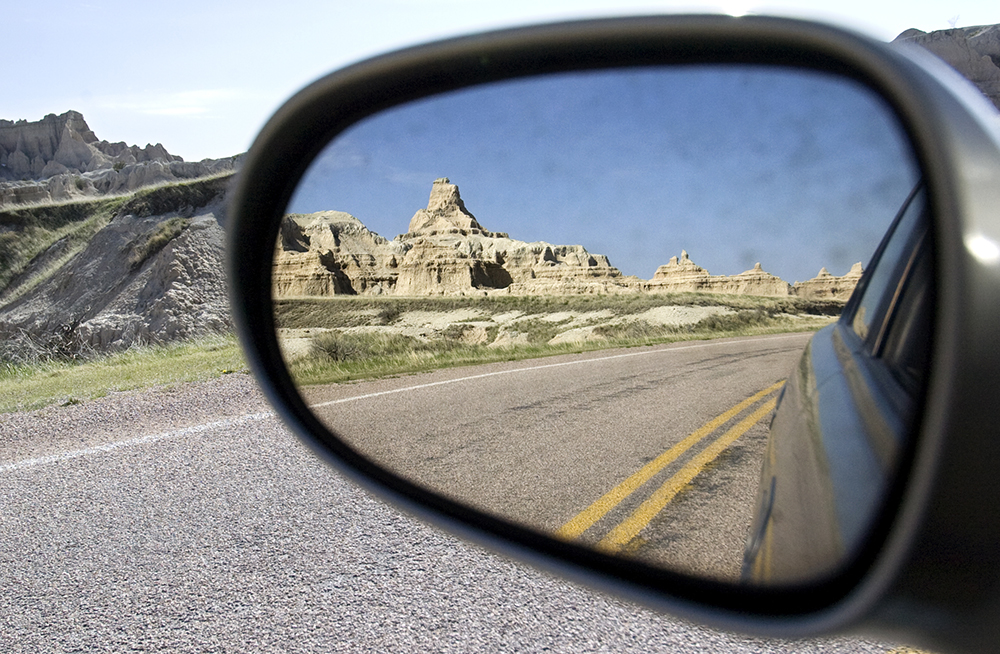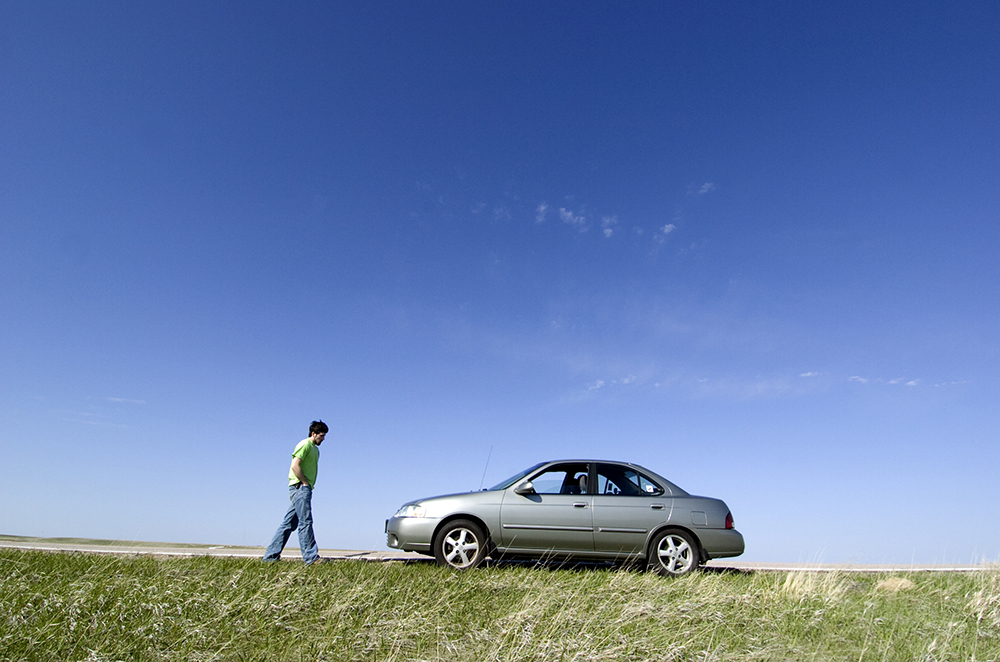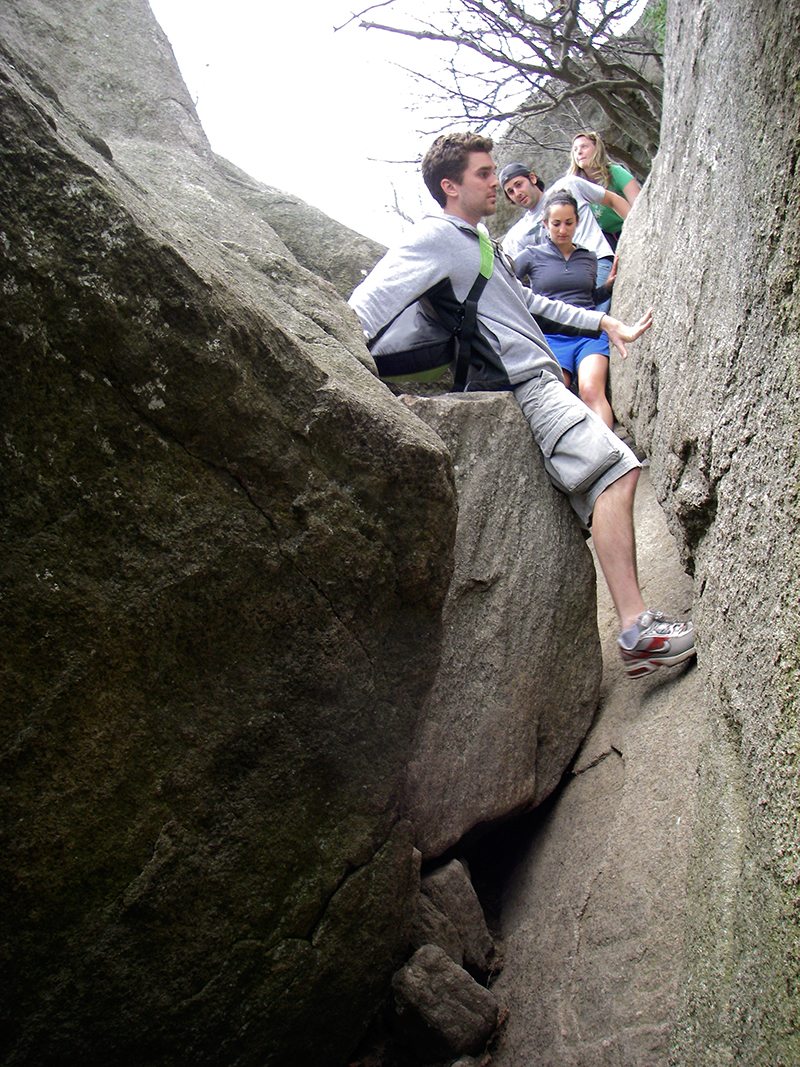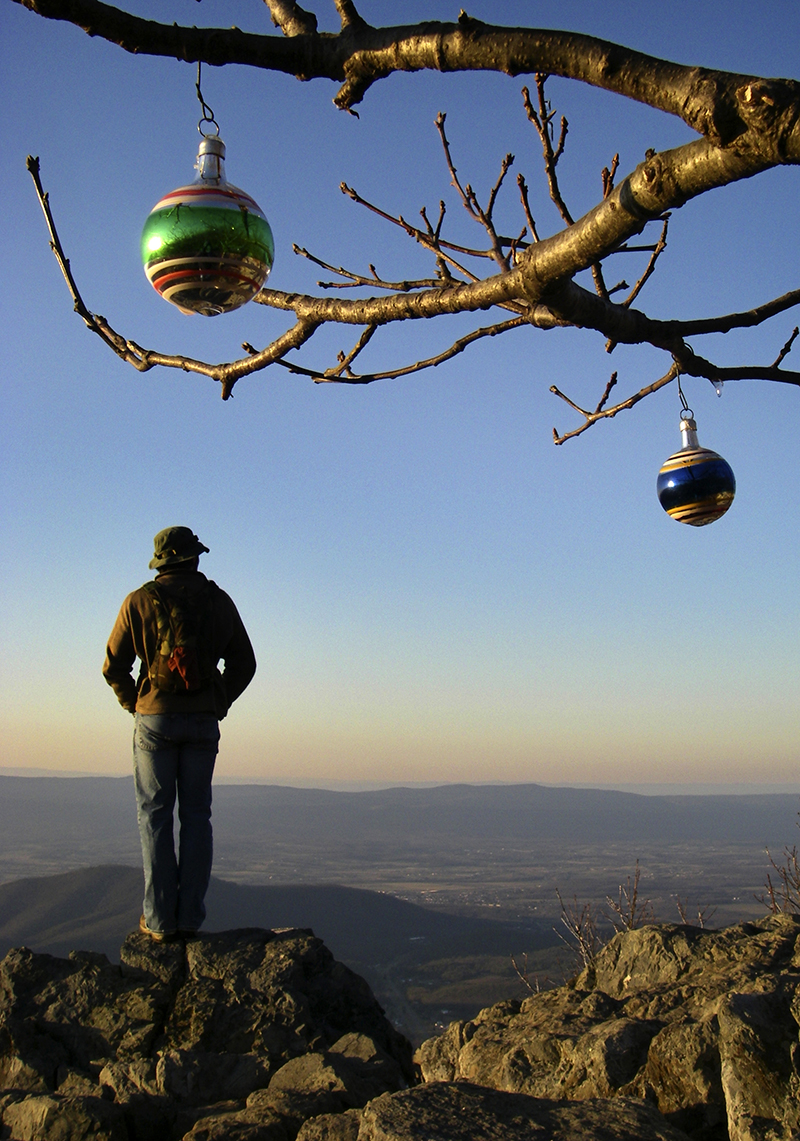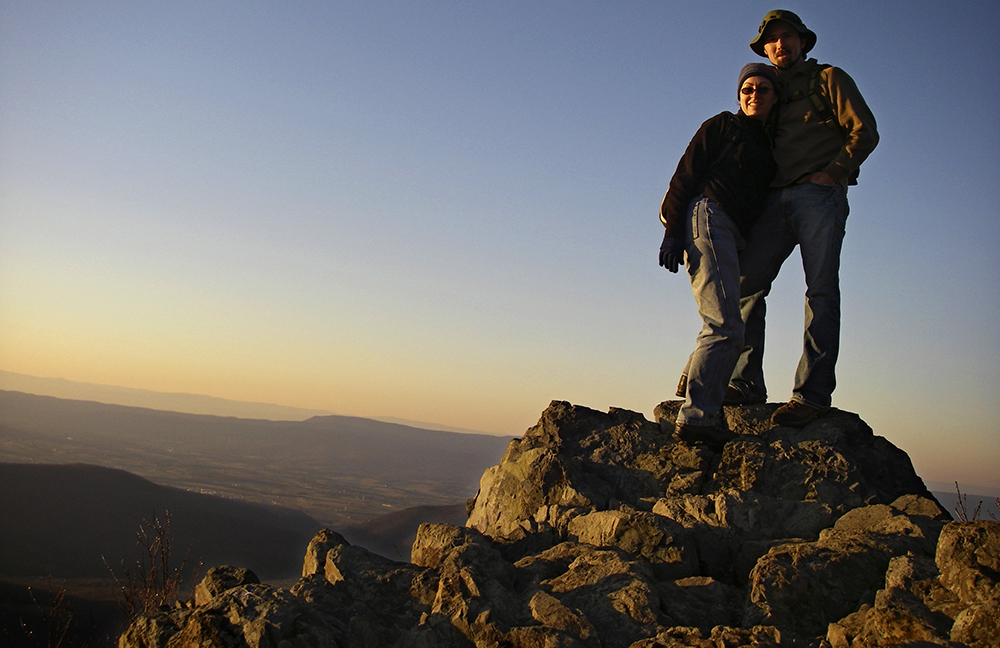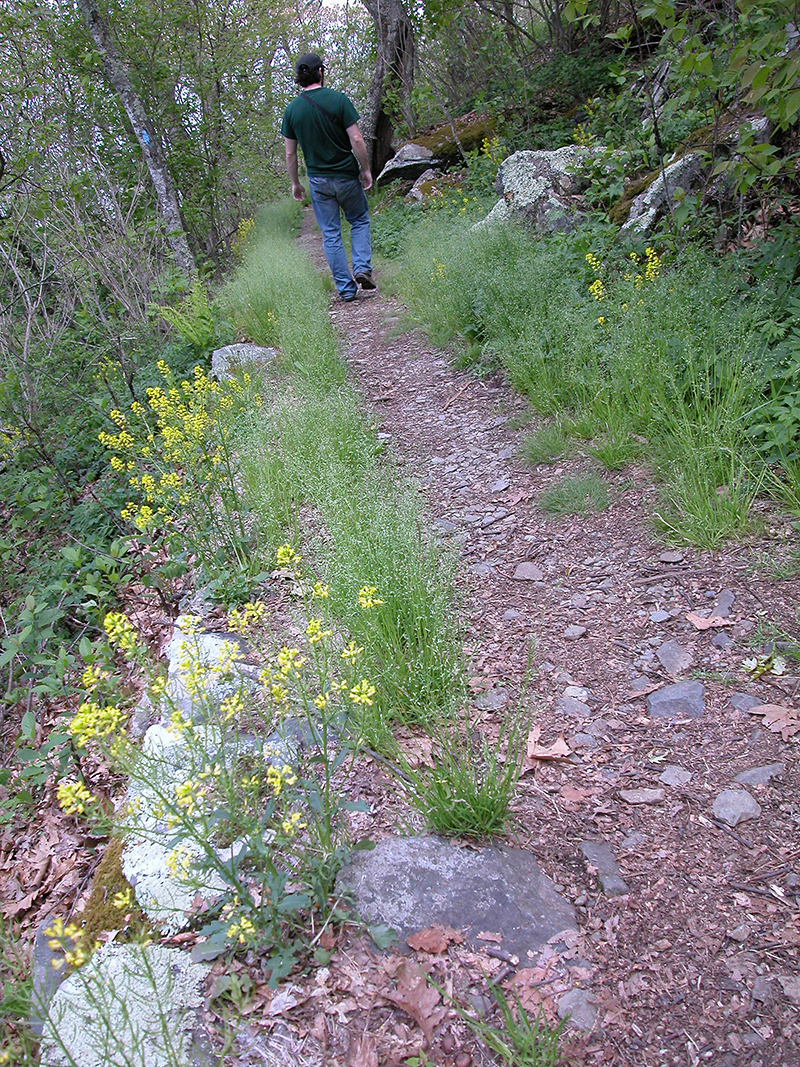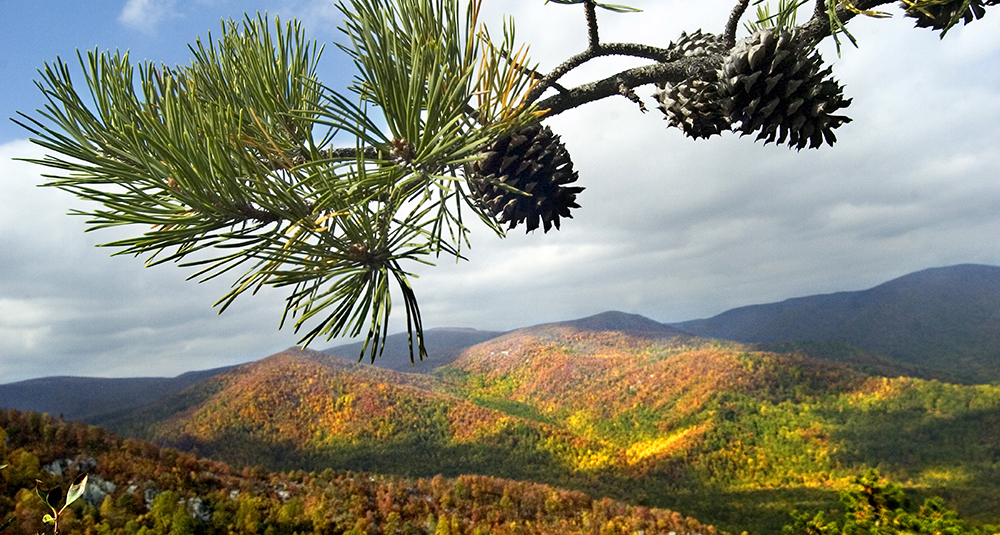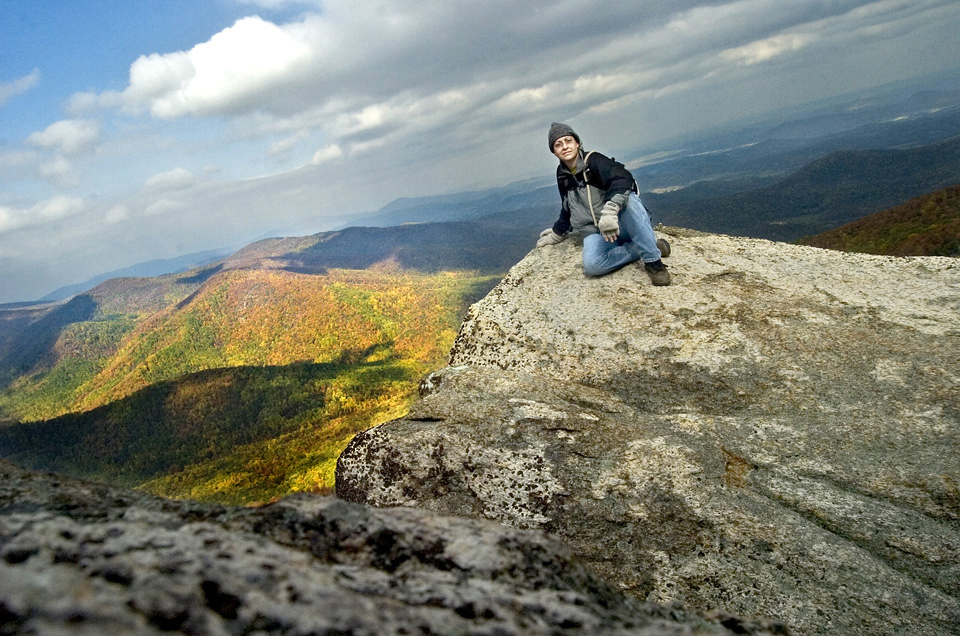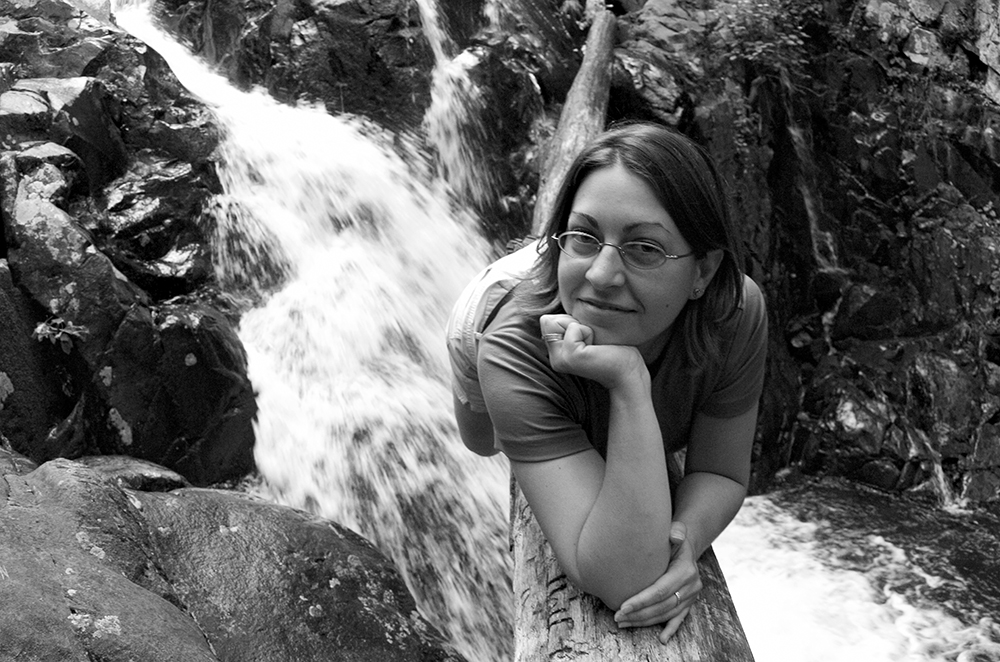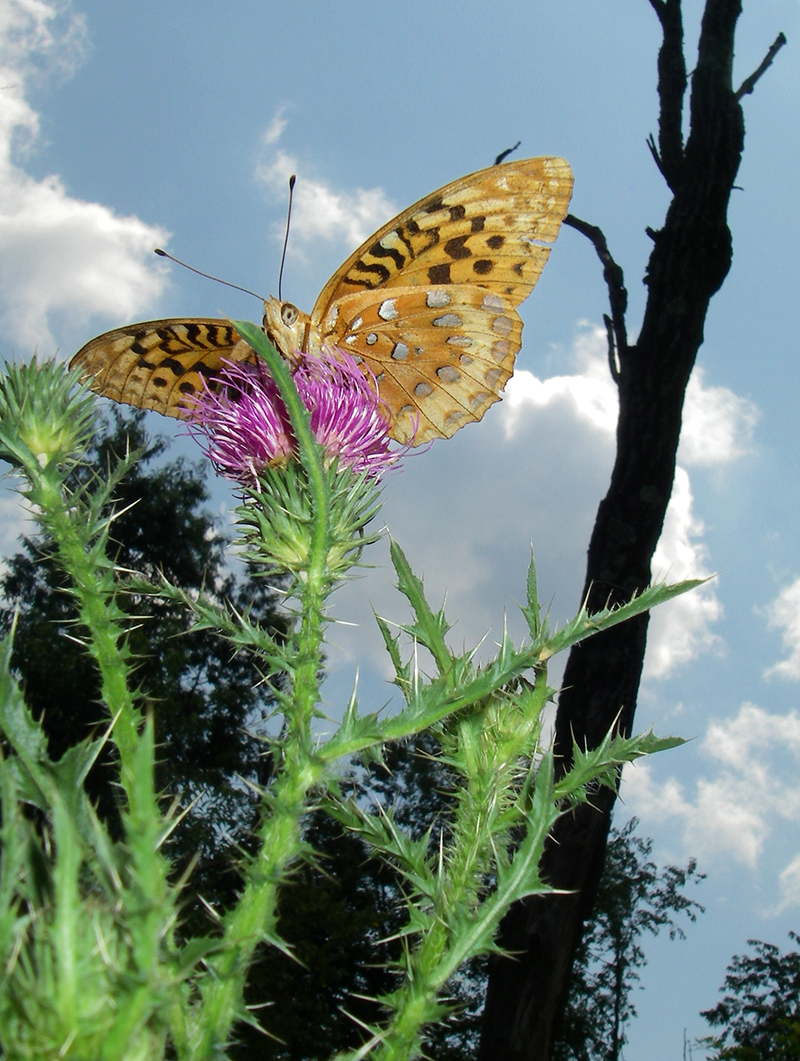
Saw this beautiful guy while hiking a couple miles on the AT in Shenandoah National Park today.
national parks
05.06.2008
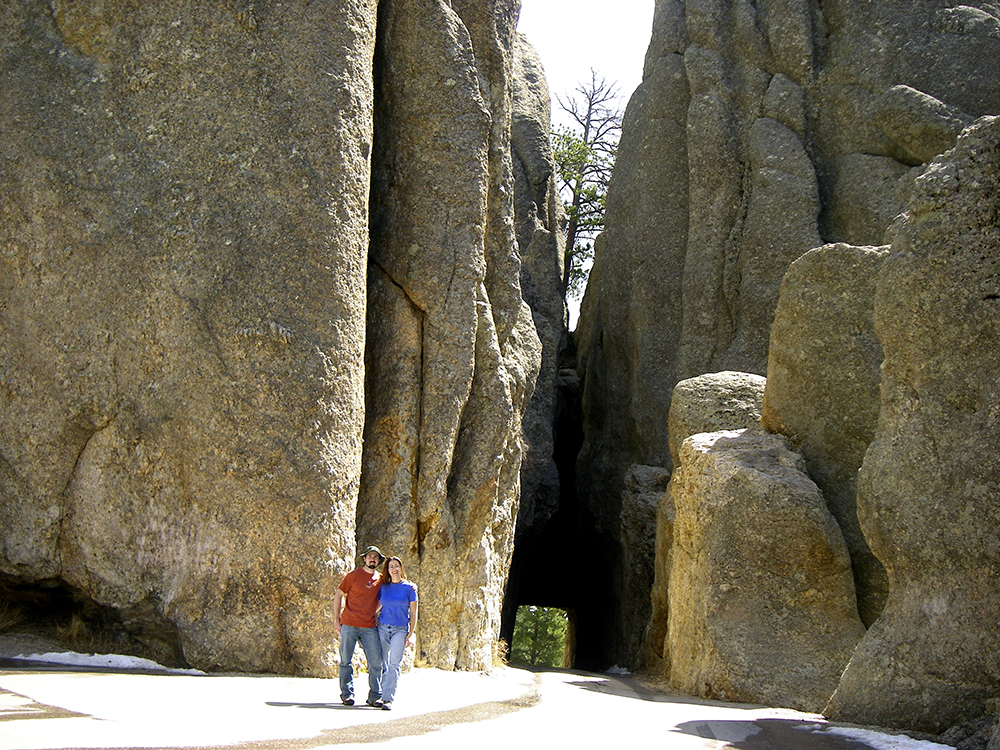
During the morning we drove the Needles Highway in the Black Hills of South Dakota.
In the evening, we hooked up with NPS Ranger Jason Walz to survey in Wind Cave.
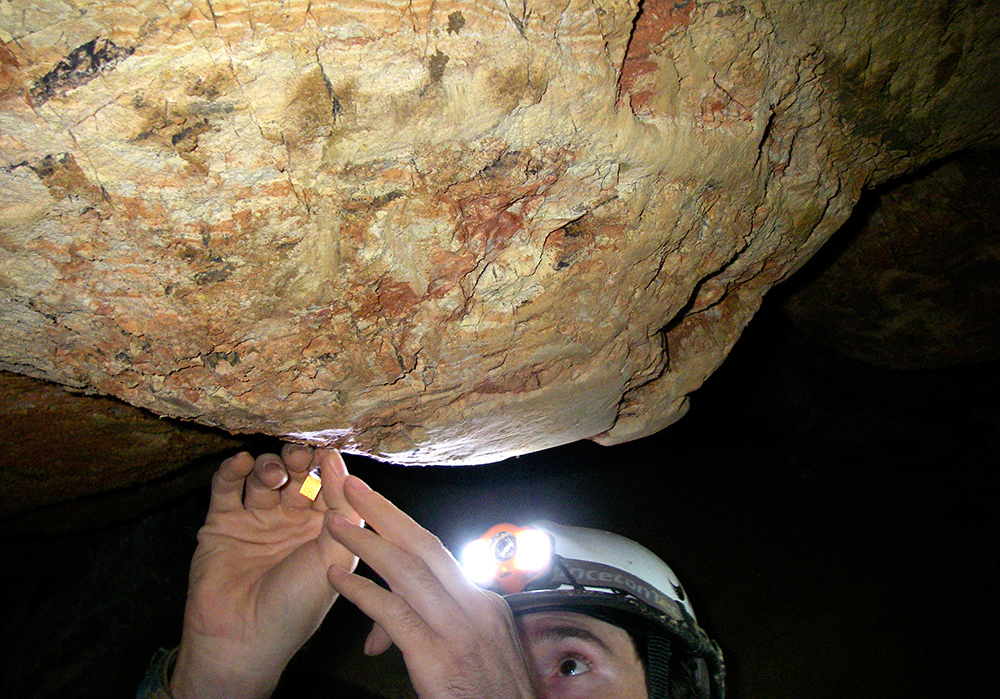
Chris sets a survey station in Wind Cave.
Western Wonderland Roadtrip
Wednesday we had a survey trip planned in Wind Cave — the other National Park Service-owned cave in the Black Hills. This time Park Ranger Jason Walz, who is originally from North Carolina, would be leading us through this tiny-passaged, third longest cave in the United States. Wind is most famous for it’s amazing boxwork that is everywhere. US Park Service online trip report reads – “Jason Walz, Nikki Fox, & Chris Coates 5/6/08
Jason led an evening survey trip to the NWT survey along the north edge of the Historic Section. They surveyed 219 feet for the evening and left some leads for a future trip.”
We arrived in the afternoon ready to help resurvey a passage that hadn’t been visited since it’s original survey in the 1980s. We had been warned that this cave had a lot more crawling and was more like swiss cheese with the 127 miles of cave in multiple levels all sandwiched on top of each other. Wind was rather dry and sandy in the part we went to. The boxwork ranged from paper thin to half-inch in thickness. In one section, we saw popcorn growing on the ends of the boxwork. Apparently, regular formations we see here in the east, like flowstone, stalagmites, columns, drapery, soda straws, etc., are very rare in Wind due to the lack of water in the caves. Jason took us by one of the highly-decorated rooms in the cave, which had water and white flowstone. Not very impressive for us, just regular cave speleothems, but pretty none the less.
An odd difference from eastern versus westerns cavers is attire. Jewel is 49 degrees and Wind is 53 degrees. The standard cave garb of choice for both caves is BDU bottoms and a short-sleeve synthetic top with a poly pro top in your pack. To me this seems to be very underdressed. What would happen if someone was injured? The person would be hypothermic in a short amount of time. We were warned by many people not to wear our cave suits because we would be too hot. This was not the case for me. I wore my coveralls all three days underground and actually got cold each time because I wore less clothes underneath the suit then I normally would wear!
Also, the Park Service has a rule about how cavers wear their cave packs. No backpacks allowed, only side packs can be worn. I can see how this is needed in Wind cave with delicate boxwork covering everything. In Jewel it simply was a hassle.
05.04.2008
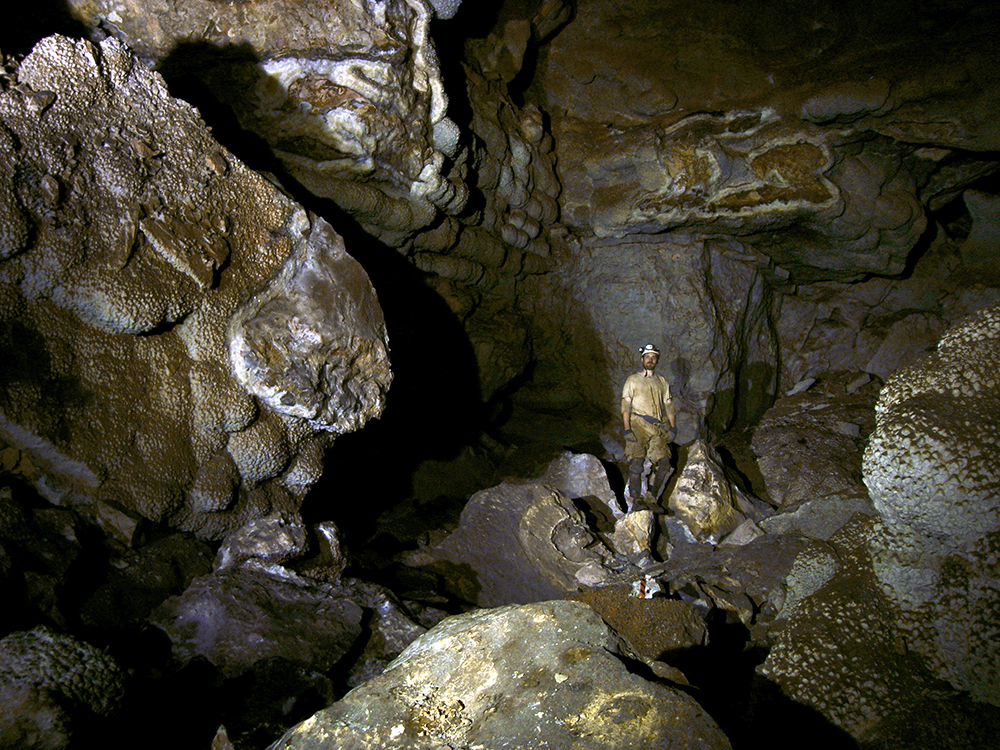
An amazing day caving with Dan Austin in Jewel Cave.
Western Wonderland Roadtrip
Chris and I were excited to have three caving trips lined up in two world-class caves: Jewel and Wind Caves. Sunday we arrived bright and early for our first trip underground into Jewel. Dan Austin, the Paha Sapa Grotto vice chair (which is the only South Dakota grotto), took us underground for an eight-hour trip. He took Chris and I on a measly couple-mile tour amid the 142 miles of cave. Jewel is the second longest cave in the world, only to be surpassed by the Mammoth Cave System in nearby Kentucky.
As a South Dakota native, Dan is certified by the National Park System as a trip leader. He told us it took 100 hours of logged underground time to become one. I think it would be easy tooling around 142 miles of passage and surveying new passage to build up 100 hours.
The main difference for us, being eastern cavers, was the manganese present in Jewel. The manganese dioxide, called pyrolusite, covered the floors of all the lower passages in the cave. It looked like dark shale covering the floor in chips and slabs. Unknowing to the caver, if you stepped on them, you would break apart the deposits and would release a monster to reckon with. Once you break up the manganese, it turns into a thick, oily, slick surface that stains everything you touch.
A distinctive path showed the way where everyone had been before us. You could tell if someone had strayed from the established route by a single step. Also, the walls were covered in the black manganese where people used formations as handholds. It was strange for us not being able to go our own way and check out leads as we seemed fit. We became very aware of all of our movement and it was clear that we had to stay on the path to preserve the beauty of the cave.
Dan knew his cave very well. He was constantly throwing facts at us along the way. Things like the nailhead spar that we saw on the walls covered about 80 percent of the cave. It supposedly varied from an inch to 2.5 feet thick in the lower levels. We mostly saw 6 to 10-inch thick nailhead spar, which gives great traction under the slick manganese residue. Dan also told us of how climatologists have been conducting studies on the air flow of the cave. By calculating how much Jewel breathes, things like cave volume and connections to other caves can be better determined. He said that from the current air volume, anywhere from 5-50 percent of the cave has been discovered. Now that’s a lot of cave to survey!
There is also the mysterious “white stuff” that appears in Jewel. This very technical name is given to this white residue that appears to cover the walls in the lower levels of Jewel. Dan said the mineral content has been tested and scientist still do not know what the compound is made of or how it forms in the cave. Hence, the highly scientific name of “white stuff” was born.
Jewel cave is also the first cave for both Chris and I to encounter moonmilk. It is a white gummy material with the consistency of cottage cheese. It looks like normal white calcite or aragonite deposits on the walls and the only way to tell for sure that it’s moonmilk is to touch it, thus destroying the area. Moonmilk is actually a magnesium carbonate compound.
The highlight and destination of our tourist trip into Jewel was to see the amazing frostwork at Bunyan’s Foot. This huge formation, which looked like the foot of a giant, hangs over a breathing tube that leads down from the loft level to the next lowest level. Once climbing up to these levels, the cave changes dramatically. There is no more nailhead spar, but only delicate sand formations lining the walls with colors of red, tan, yellow, white and black. We even saw bat scratches, evidence from long ago of a bat population in the cave miles from the natural entrance of today. Bunyan’s Foot was the most amazing frostwork I’ve ever seen. The fragile white hairs ranged from tiny little things you can see in Virginia’s highly decorated cave of Paxtons to several inches long. I felt as if I would break them if I breathed too hard. The entire rock was covered with frost, as was the area below it. We stopped there to eat lunch, being mindful not to drop any crumbs on the cave floor, and take photos.
One interesting thing I noticed was that there were many features and passages that were unnamed. Many squeezes and rooms that were forgotten to the many other miles of “better” passage. I guess it would be too much naming everything. You would have a list of place-names 50 pages long in a cave like Jewel.
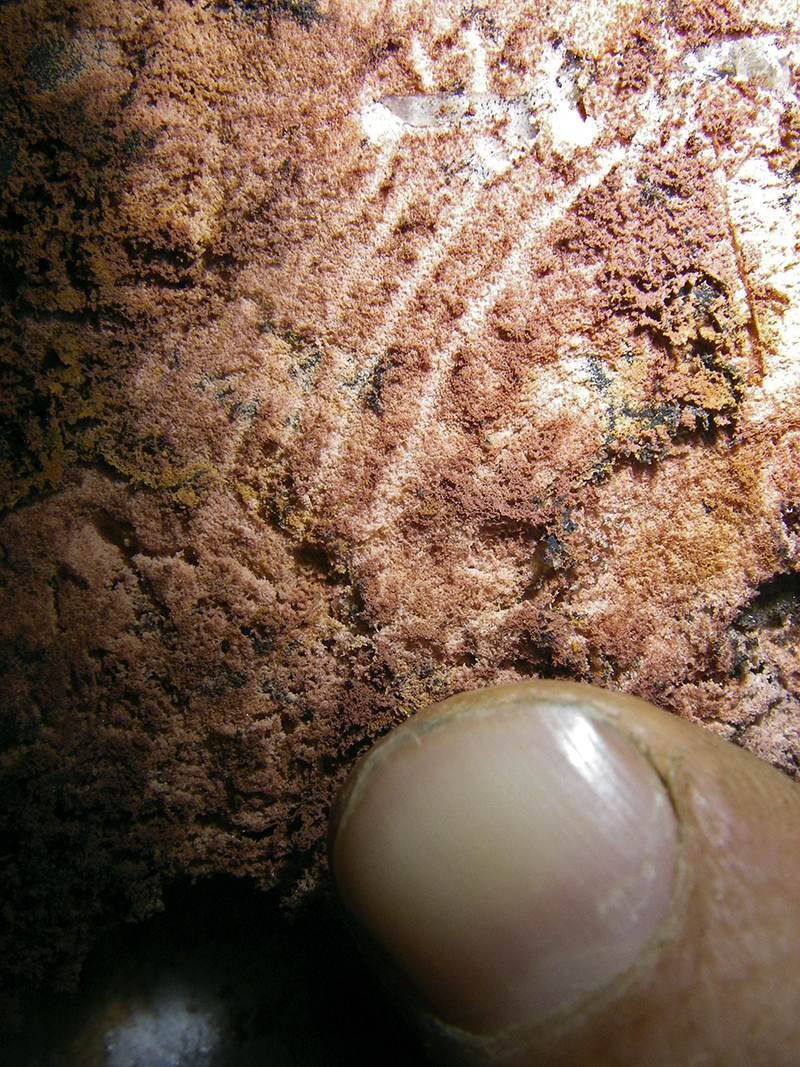
A cute little bat scratch on the wall.
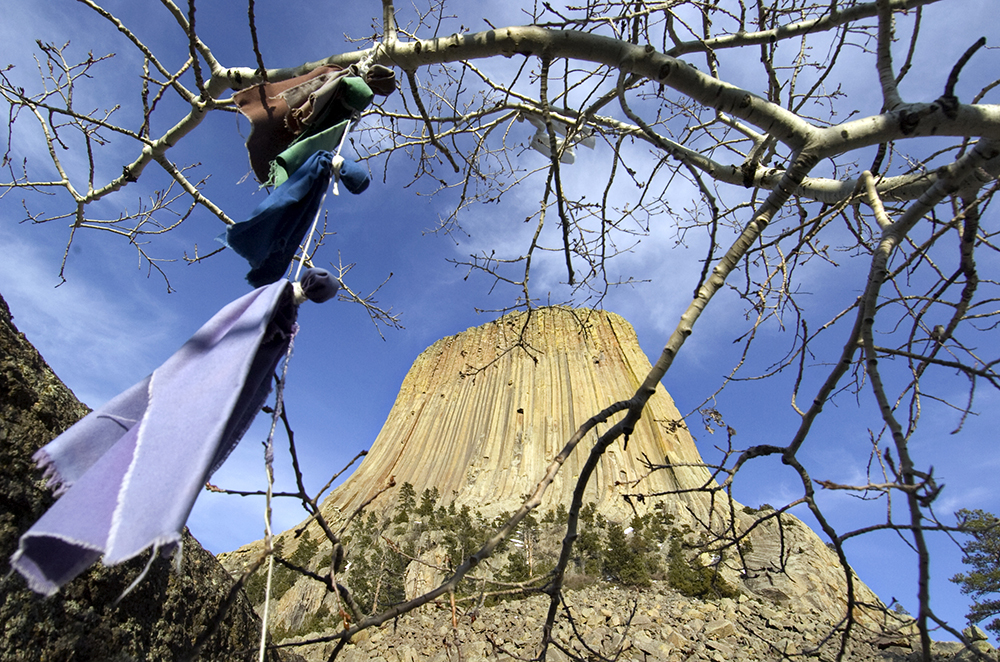
We finished out our day visiting Devils Tower National Monument in Wyoming. Here are prayer ties on a tree.
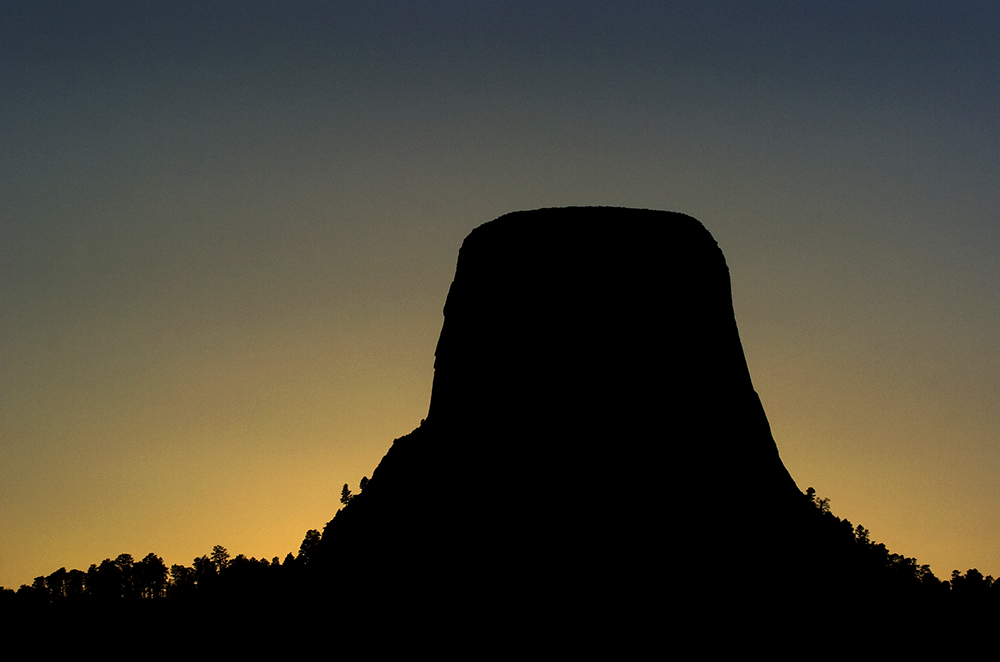
And to finish our our amazing day, the sunset behind Devils Tower.
05.03.2008
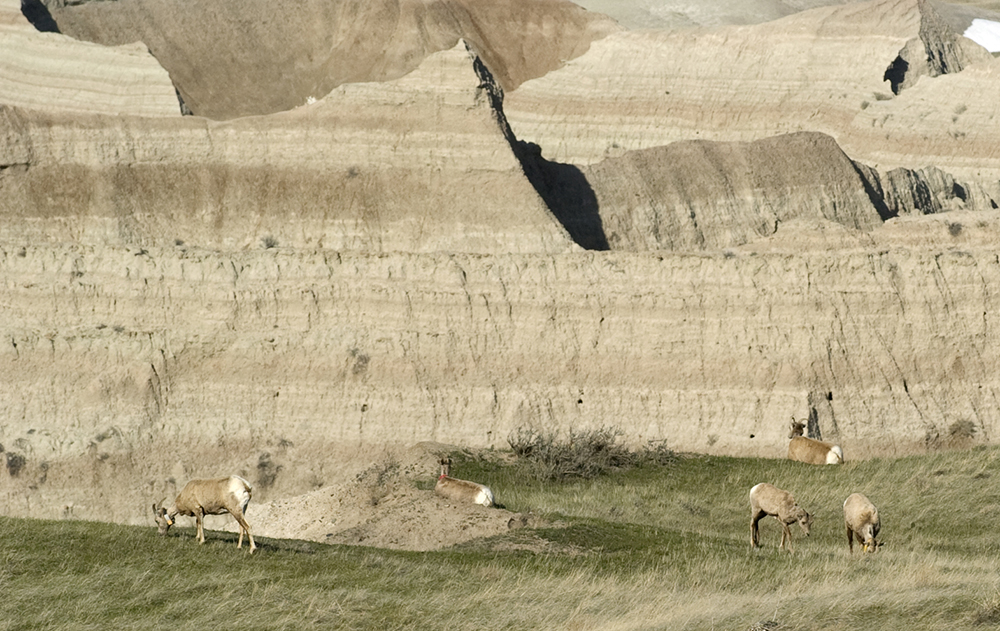
The Badlands National Park . . . the start of our Western road trip vacation.
Western Wonderland Roadtrip
In early May, I took Chris Coates with me on my first trip home to the rolling fields of corn in central Nebraska in five years. My mission was to see the family and get underground as much as possible in what I lovingly refer to as my “old backyard,” which consists of western Nebraska, South Dakota, eastern Wyoming and Colorado.
And so the voyage started by packing the car and hitting the road after dark and driving the first leg of our trip: 20 hours to Sioux Falls, S.D. We were contacted by caver Bonny Armstrong, a Park Ranger at Jewel Cave, almost at our destination telling us of a freak blizzard that hit the Black Hills in South Dakota. We were unaware that we were heading further into the cold front with heavy rain and 30-degree temperatures. Our plans were to camp and rappel the next day at Palisades State Park. Needless to say, we opted for a hotel room.
That was the least of our worries, as Bonny told us Interstate 90 was shut down from Wall, S.D. into Wyoming. How were we going to get to the Black Hills? We would have to backtrack into northern Nebraska and take highways to access the southern part of the Hills. Fortunately, the next day reached temperatures in the 50s and the 13 inches of snow melted upon arrival the next evening.
